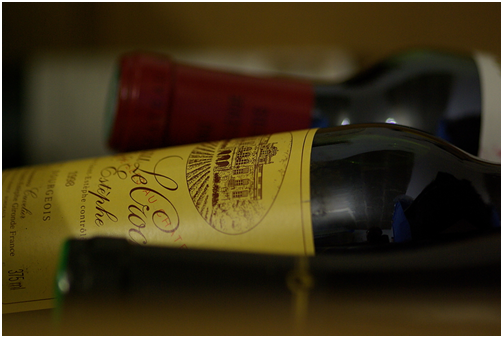Bordeaux Wine: Unique System of Distribution of Wines at all Stages
 Bordeaux wines are some of the most famous and highly sought after in the world. This prestigious wine region has some unique aspects to its system of distribution, including the practice of selling wine through advanced sales, called en primeur. Here is an explanation of the unique distribution of Bordeaux, and thoughts on the en primeur system.
Bordeaux wines are some of the most famous and highly sought after in the world. This prestigious wine region has some unique aspects to its system of distribution, including the practice of selling wine through advanced sales, called en primeur. Here is an explanation of the unique distribution of Bordeaux, and thoughts on the en primeur system.
History of wine distribution in Bordeaux
In most places in the world, wines are sold from winemakers to retailers. In Bordeaux, the top chateaux do not sell their wine directly to either retailers or consumers. Instead, they sell to a fixed set of merchants called negociants. These negociants then offer the wines to retailers or importers.
In the early 1970s, prices of wine were high, and the Bordeaux region was doing quite well financially. However, a big scandal (sometimes called Winegate), changed all of that. The exposure of doctored wines and fake labels caused the prices of Bordeaux to plummet. Some chateaux went bankrupt, others were sold. The crisis led to developing the current en primeur system.
The en primeur system of selling Bordeaux wine
Rather than selling finished bottles of wine, they sell wine futures, after fermentation but before bottling. Each year, there is an international event called the “Grand Tasting”, featuring barrel samples from the previous harvest. The wines are tasted and rated by experts, then offered for en primeur sales at a price set by the chateaux.
For the chateaux, this system offers enormous advantages. They get a lot of media publicity from the event, and an excellent promotional opportunity. Another advantage is that this gives them some advanced cash, rather than having to wait two years for payment. A final advantage is that it spreads the risks. If something goes wrong with the wine between the barrel samples and finished bottles, that risk is now taken by the buyers of the wine, rather than the producer.
The negociants have the advantage that all sales of these wines go through them. They can choose whether to cellar the wines to sell later, or pass on via en primeur sales. The downside for them is that they must buy their allotment each year even if it is a disappointing vintage, or they will lose their allocation the following year.
For wine retailers and consumers, the en primeur system is often the only way to purchase highly prized vintages from top chateaux. However, buyers do assume the risk that the final wine they receive may not be the quality they expected based on the young sample tastings.
Problems with the en primeur system
The biggest problem with this distribution system is that enormous price rises have made en primeur wines too expensive, and sales are not what they used to be. Prices for the same wines raised from 15 euro in 1990, to 90 euro in 2005 – a six fold increase in just 15 years. The chateaux are happy with these high prices, but consumers are not.
You would expect that the price of a wine would be lowest during the en primeur sales. This is when the consumer is taking on a greater risk, and the supply of the wine is at its maximum. The price should then rise over time. However, recent performance does not show this to be true. Since 2005, prices have not risen from the en primeur price, and in numerous cases, have actually declined.
For great vintages like 2010, prices were astronomical, and sales were slow even though the wine quality was stellar. For lesser vintages, sales have been even slower. The 2012 en primeur campaign was called the “forgotten campaign” due to the poor consumer response. It may take some price drops before consumers return to en primeur sales with their previous enthusiasm.
Is it a good idea to invest in en primeur wine right now? Nobody knows for sure, and in spite of some alarming numbers, there are investors willing to take that chance. As long as they have the capital, they can invest. However, if you’re not that rich and you want to make good money from wine investments, you might want to stay away from such perilous endeavors.

Category: Family Finances





